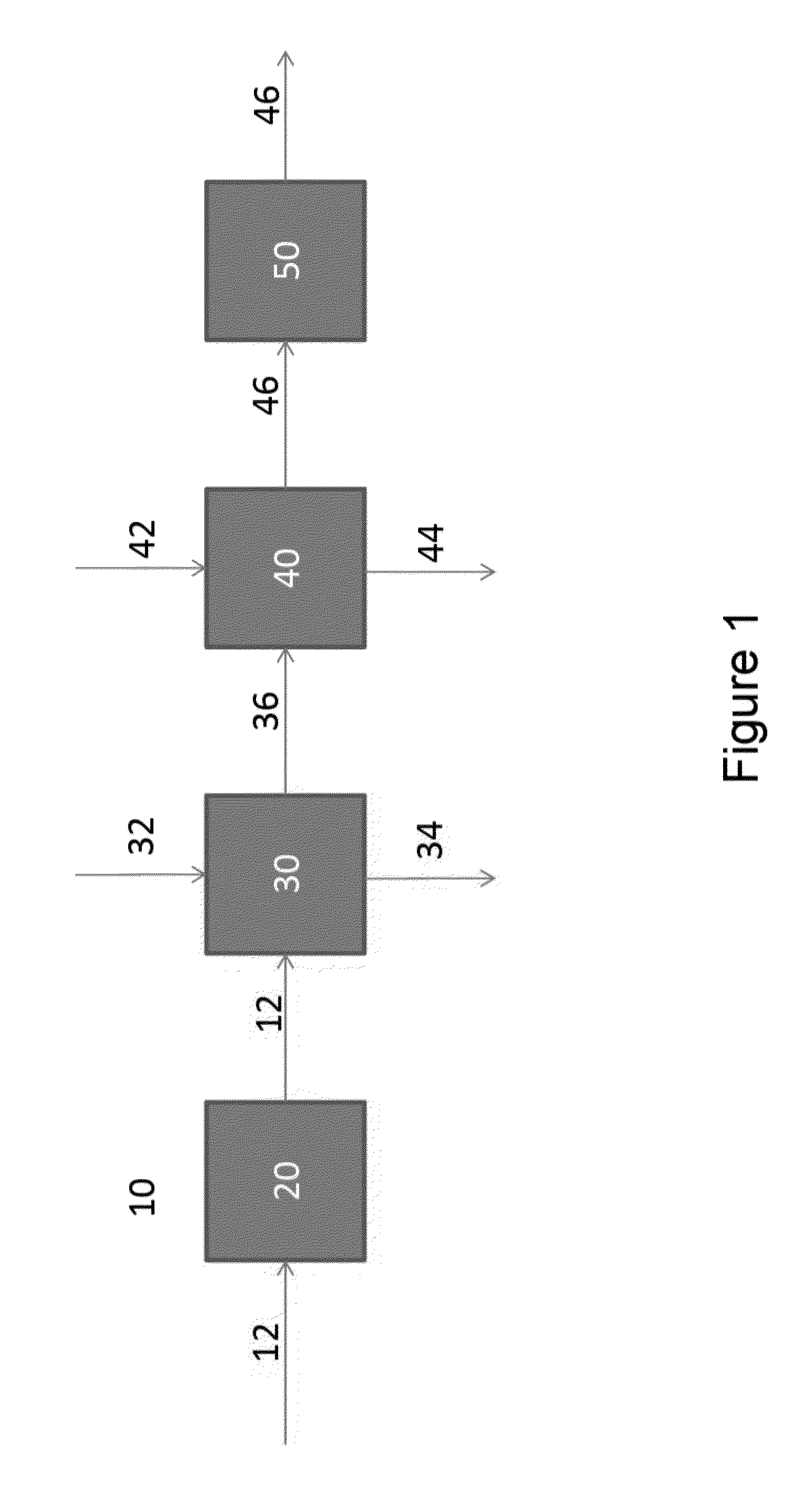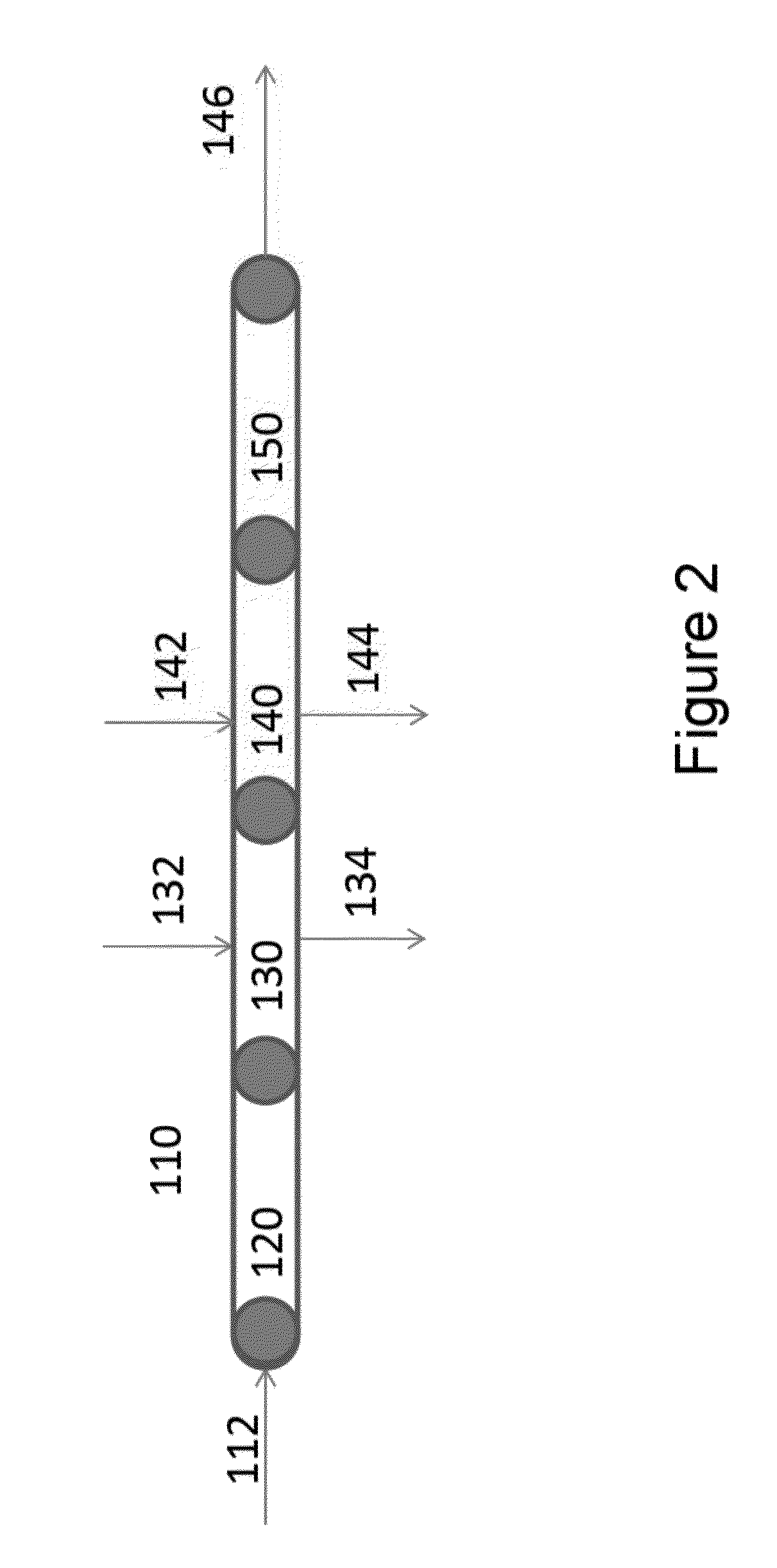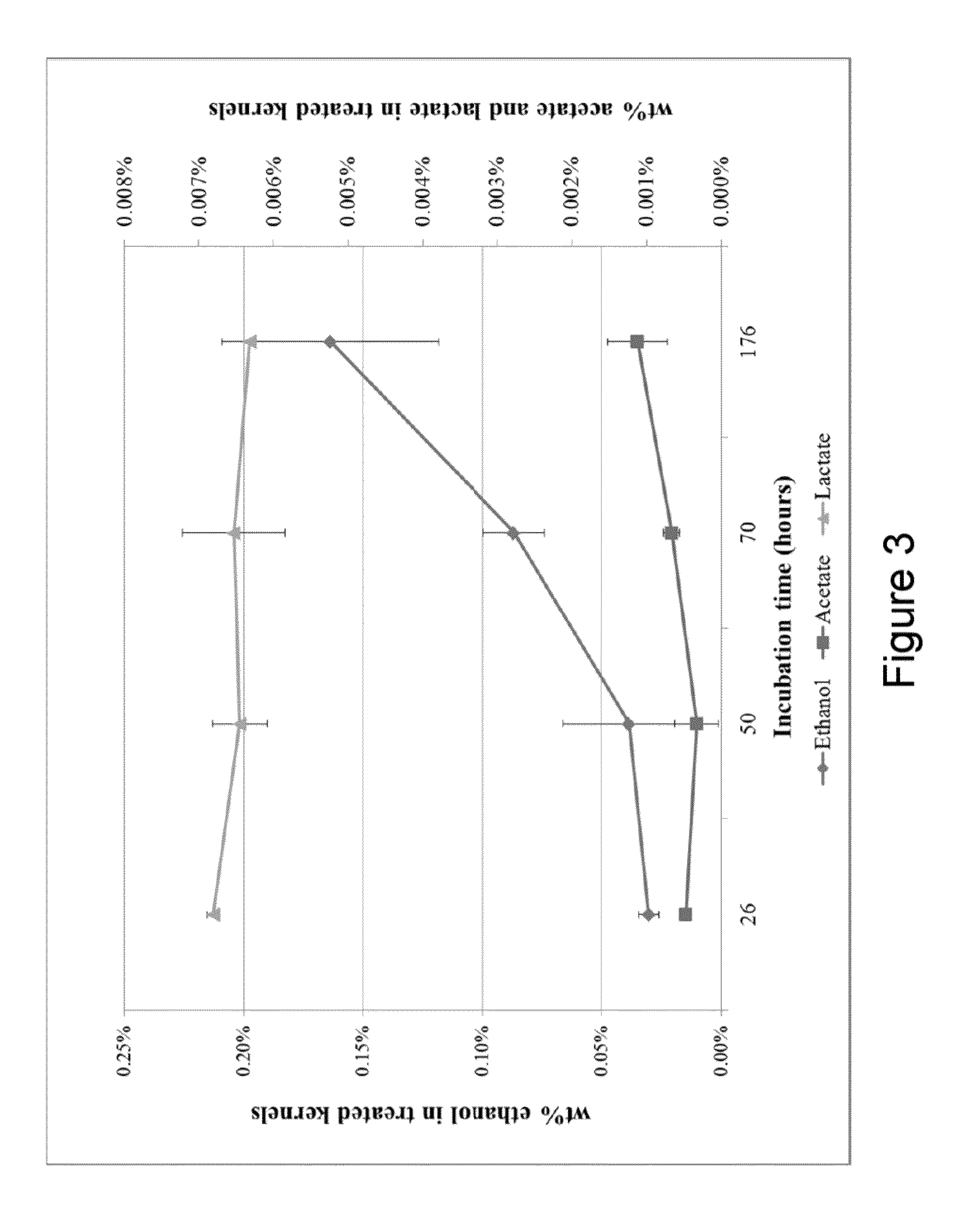Biological Stabilization for Fermentable Biomass
- Summary
- Abstract
- Description
- Claims
- Application Information
AI Technical Summary
Benefits of technology
Problems solved by technology
Method used
Image
Examples
example
Biological Stabilization and In-Situ Fermentation with Saccharomyces Cerevisiae of Moist, Whole Kernel Zea mays Contaminated with Native Microbes
[0116]Summary:
[0117]A series of experiments were conducted to show that the ethanologenic yeast Saccharomyces cerevisiae is capable of biological stabilization of the soluble sugars in mature whole kernels of Zea mays that are moist and contaminated with native microbes, thus showing that Saccharomyces cerevisiae is an effective biological stabilizer for a fermentable biomass. Importantly, at higher moisture contents, and therefore more unstable, whole-kernel corn resulted in higher ethanol concentrations than similarly high-moisture broken kernels, showing that Saccharomyces cerevisiae is especially suitable as a biological stabilizer for undried, whole kernel corn contaminated with native microbes. A time-course fermentation experiment on whole kernel, contaminated corn showed that the ethanol concentration reached 0.16 weight percent wit...
PUM
 Login to View More
Login to View More Abstract
Description
Claims
Application Information
 Login to View More
Login to View More - R&D Engineer
- R&D Manager
- IP Professional
- Industry Leading Data Capabilities
- Powerful AI technology
- Patent DNA Extraction
Browse by: Latest US Patents, China's latest patents, Technical Efficacy Thesaurus, Application Domain, Technology Topic, Popular Technical Reports.
© 2024 PatSnap. All rights reserved.Legal|Privacy policy|Modern Slavery Act Transparency Statement|Sitemap|About US| Contact US: help@patsnap.com










